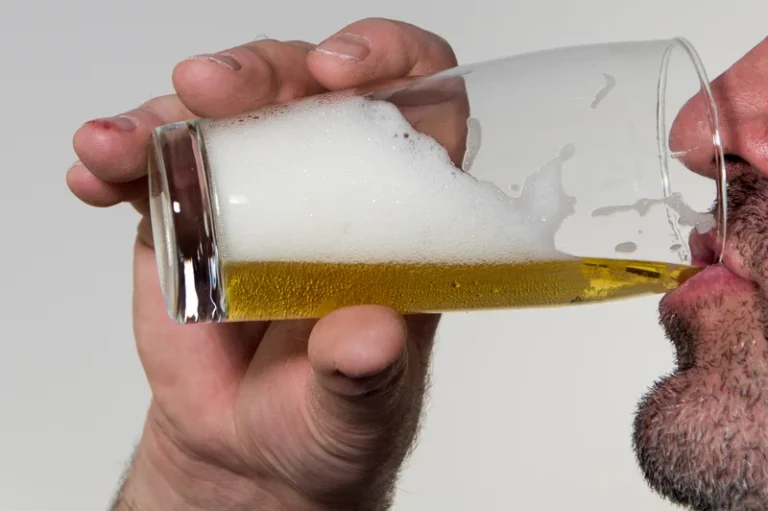
Physical blackouts you find yourself on the floor wondering what the hell just happened. Trigger induced or just the physical drain of keeping secrets which is often part of the trauma for abuse victims. I say ineffective because blocking emotional pain does not process what happens. Physical pains, such as a broken hand will heal themselves, emotional pain needs our participation in the healing process.

Effective Treatment Approaches For Co-Occurring Disorders: PTSD and Alcohol Addiction

For effective treatment, it’s necessary to manage both issues simultaneously, which requires a deeper understanding of how they correlate. Seeking treatment for both PTSD and alcohol dependency concurrently is crucial for a comprehensive recovery. In this blog post, we will explore everything about PTSD and alcohol addiction, along with integrated treatment approaches used to address both. Equally, going through trauma can lead to an alcohol use disorder, whether or not you develop PTSD. But if you or someone you know has PTSD, an alcohol usage disorder or both, it’s important https://ecosoberhouse.com/ to get support.
- For a typical adult, this pattern corresponds to consuming five or more drinks (male), or four more more drinks (female), in about two hours.
- Responses were summed to create a total score, with total scores ranging from 0–6.
- With a knowledge of what you can drink, you’ll feel more at ease before arriving, making social interactions more enjoyable and stress-free.
- This allows people that are blacked out to carry on conversations and recall stories from earlier in the evening while they were intoxicated.
- In a study of mostly female college students, symptoms of posttraumatic stress explained 55% of the variance in alcohol use (Edwards, Dunham, Ries, & Barnett, 2006).
How alcohol, time and trying to forget trauma can change what we remember
- The 4-item version of the PTSD Checklist has similar diagnostic utility when compared to the PCL-5 and has demonstrated validity in identifying symptoms of PTSD among adults and combat Veterans (Price et al., 2016).
- Back in the 1980s, when PTSD wasn’t officially recognised, it was termed shell shock or combat fatigue.
- I had to learn to accept that I had them but choose to not keep them in my life.
- If 100 people have a traumatic experience, around 10 percent of those people will get chronic PTSD with intrusive flashbacks that they cannot control, Anderson said.
- One man told me of having gone to a magic show after dinner and suddenly, as though teleported through space and time, finding himself on stage with the magician being asked to pick a card from a deck he was handed.
- And sometimes alcohol usage disorders are simply a comorbidity that appears alongside PTSD, without one necessarily causing the other.
It is possible for PTSD to be successfully treated many years after the traumatic event occurred, which means it is never too late to seek help. Whether it’s marijuana addiction every weekend or more frequently, consider alternative plans to disrupt this habit cycle. Simple activities like going for a walk, calling a friend, or engaging in journaling or reading can be excellent substitutes. By retraining your brain to embrace positive actions during these times, you pave the way for healthier habits.

Alcoholic Life Expectancy: Using Calculators and Examining Overall Impact of Alcohol Abuse
These uncomfortable sensations persist even long after the event has ended. Besides this, individuals with PTSD might also experience flashbacks, nightmares, severe anxiety, and uncontrollable thoughts. Studies have also found that the severity of PTSD symptoms can significantly influence the extent of alcohol use. This illustrates a direct relationship between trauma’s impact and substance use as a form of self-medication.

Mental health symptoms.
Even when one tries to quit alcohol as a part of rehab, the withdrawal symptoms, along with that of PTSD, make it more difficult. Stopping the use of alcohol abruptly could cause anxiety, tremors, seizures, headaches, insomnia, nausea and vomiting, high blood pressure, etc. ● The brain reduces the natural production of dopamine (feel-good hormone) and the sensitivity of its receptors. It causes tolerance, where the body needs more substance to produce the same numbing and pleasurable effects. However, this issue was still seen as a moral failing or lack of willpower rather than as a disease or a response to trauma. Finally, the American Medical Association classified it as a disorder in 1956.
College-aged youth are also at an increased risk for blackouts due to the binge drinking culture present on college campuses and universities. It’s estimated that 75% of college students are current drinkers, and many binge drink at least once a week. With that many students drinking to excess on a regular basis, a good percentage of them are likely experiencing blackouts and engaging in risky behaviors.
What’s the connection between CPSTD and addiction?
Blacking out is dangerous and can be unpredictable as many individuals will commit crimes or engage in dangerous activities with no recollection the following day. The good news is that the damage isn’t permanent—although chronic excess drinking does irreversibly damage the brain. Posttraumatic stress disorder (PTSD), alcohol use, and alcohol-related consequences have been linked to ptsd alcohol blackout emotion dysregulation. Sex differences exist in both emotion regulation dimensions and alcohol use patterns. This investigation examined facets of emotion dysregulation as potential mediators of the relationship between PTSD symptoms and alcohol-related consequences and whether differences may exist across sexes. A critical aspect of Alcohol Usage Disorders often overlooked is its strong connection with PTSD, a condition triggered by traumatic experiences.
